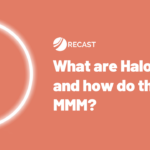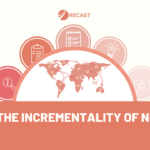Brands looking for 100% clarity in marketing measurement by using just one method won’t find it. Multi-touch attribution won’t give you that. Conversion lift studies won’t give you that. Even marketing mix modeling, which is what we focus on here at Recast, won’t give you that either.
There is not one measurement method that will give you full clarity – but you can get as close as possible by combining and triangulating between them.
Each method answers different questions, and they all have a time and a place in your measurement mix.
This article will focus on how to combine multi-touch attribution (MTA) and marketing mix modeling because that’s the common timeline of events we see consumer brands go through.
We often see brands start with digital tracking until they realize that privacy regulations, the death of the cookie, and iOS updates are quickly making them lose visibility and making it impossible to track people across the internet.
Once they see they are having problems with MTA, they go run an MMM in an Excel sheet or hire some fly-by-night consultant who doesn’t really know what they’re doing.
The results they get back are, unfortunately, totally wrong. Then one of two things happens:
1. Best case scenario the marketing team ignores the results and keeps doing what they’ve been doing.
2. The worst scenario is the marketing team actually starts to use the results and wastes a bunch of marketing spend on channels that don’t actually work.
MTA and MMM can work. But you have to combine them well. This is how we recommend doing it:
The Incrementality Question: Where MMM Thrives
The idea behind MTA is that if someone saw an ad before they purchased, we’ll give that ad some amount of credit.
But is that actually true? What if, had they not seen that specific ad, they would’ve purchased anyway?
That’s the biggest problem behind MTA: it doesn’t tell us anything about incrementality or causality.
That’s what actually matters to marketers – how many of your sales wouldn’t have happened had you not invested in marketing? MTA is just not built to answer that question.
To answer the incrementality question, marketing mix modeling is a much better fit.
MMM matches spikes and dips in sales to events and actions in marketing to provide an estimate of the incrementality of each channel. Since it also doesn’t rely on tracking people across their buying journey, it is not impacted by the diminished visibility of digital tracking.
A high-level budgeting strategy needs to be based on what is incremental vs what is not. A good MMM should be able to look out to the future, make predictions about what’s going to happen, and then make recommendations about how you can adjust your budget to achieve the goals that you have.
And your model should also help you answer scenario analysis questions:
- What would happen if we did budget A vs budget B vs budget C?
- Which of them is recommended based on our goals?
- What would happen if we took budget A and tweaked it?
- What is the ideal budget allocation for each channel to maximize its incrementality?
These sorts of questions are all answerable with an MMM, but not with MTA.
How and Where to use MTA alongside MMM
Now, we’re not saying MTA doesn’t have a place in your measurement toolkit.
It can be really useful for understanding relative performance within a certain channel – Meta, for example.
- Is campaign one versus campaign two doing better?
- Is this creative working better than this other one?
- Is a creative clearly underperforming and we should turn it off?
MMM won’t be that granular at the campaign or tactic level so use MTA directionally within-channel optimization.
Multi-touch attribution and media mix modeling: final thoughts
We’ve built a database of 42 top consumer brands, such as Uber, Amazon, and Airbnb, providing unique insights into their measurement methods.
Over 40% of the brands in the database are using at least two methods together.
We think that number will continue to increase and more brands will use a combination of measurement methods to get close to ground truth.
Yes, MTA as the default will continue to be the standard for smaller brands, but as they scale it just won’t be enough – and it seems it will only keep providing less information (and more biased).
So, TLDR:
- Use your platform reports or analytics to provide directional data for small daily optimizations like turning off a poor-performing ad or adjusting campaign settings.
- Use your model to forecast different budget allocations between channels, determining how much you can spend in a channel before it becomes inefficient.



